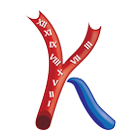Hypercoagulation and COVID

In the evolving fight against COVID-19, scientists discovered patients have varying coagulation abnormalities. It is believed patients, “frequently have hypercoagulability caused by the immune response to the severe acute respiratory syndrome coronavirus-2 infection.” 1 These patients “may have a number of complex and varied coagulation abnormalities that create a hypercoagulable state.”2
The reasons behind the hypercoagulability are not fully know, but several changes in the coagulation of COVID-19 patients have been discovered. In a study of laboratory findings of patients with severe COVID-19 pneumonia, Cuker and Peyvandi 1 report:
- PT and aPTT normal to mildly prolonged
- Platelet counts vary from normal to increased
- Increased fibrinogen concentration
- Increased D-Dimer
- Elevated factor VIII activity
- Large increase in VWF antigen possibly associated with endothelial cell damage
- Subtle decreases in antithrombin, free protein S and protein C
Cuker and Peyvandi found “Other studies have reported similar findings consistent with a hypercoagulable state, including very high D-Dimer, VWF antigen, and factor VIII activity.” 1
Mazzeffi, Chow and Tanaka concur, “The immune response to severe acute respiratory syndrome conornavirus-2 (SARS-Co V-2) infection leads to coagulation system activation and hypercoagulability in many patients with coronavirus disease-2019 (COVID-19).”2
Clinically speaking, Cuker and Peyvandi report, “One of the most striking features of COVID-19 is the wide spectrum of clinical manifestations and outcomes, from asymptomatic to various degrees of organ dysfunction to death. They conclude, “Likewise the spectrum of thromboembolic manifestations is broad and appears to vary widely among different individual and different clinical studies.” 1
- Cuker, Adam, and Flora Peyvandi. “COVID-19: Hypercoaguability.” Uptodate, 9 Aug. 2021, 1:00pm, www.uptodate.com/contents/covid-19-hypercoagulability.
- Mazzeffi, Michael A, et al. “COVID-19 Associated Hypercoagulability: Manifestations, Mechanisms, and Management.” Shock (Augusta, Ga.), Lippincott Williams & Wilkins, 1 Apr. 2021, www.ncbi.nlm.nih.gov/pmc/articles/PMC7959868/.
